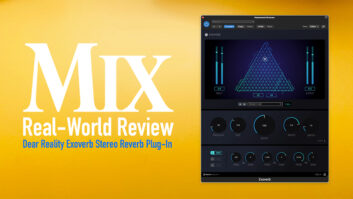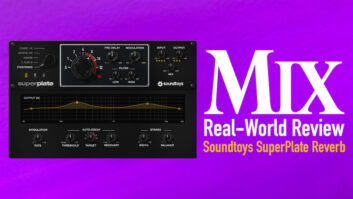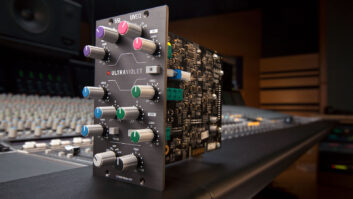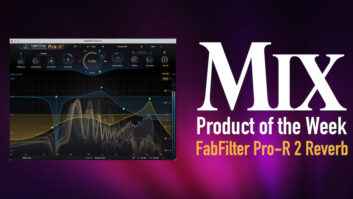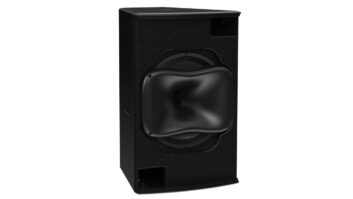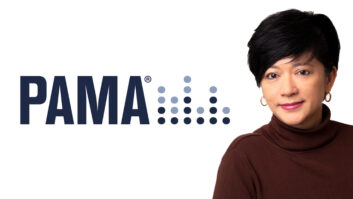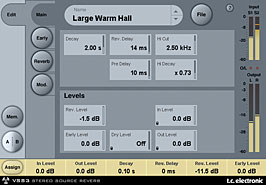

Although my TC Electronic System 6000 remains one of my favorite audio toys, it’s sometimes maxed out in a film mix. Other times, I want to get sounds quickly, and that usually means turning to plug-ins rather than hardware. Either way, the TC Electronic VSS3 Stereo Source Reverb plug-in comes in handy for creating System 6000 — style, stereo-sourced reverberation on the fly. Like the System 6000, VSS3 supports sample rates from 44.1 to 96 kHz.
FAMILIAR INTERFACE
I found the iLok setup to be incredibly quick as I initially installed VSS3 on my Pro Tools Accel rig with Pro Tools HD Version 6.9 (the VSS3’s minimum software requirement) on a 2GB Mac G5 with two PowerPC chips running OS 10.4. I later upgraded to Pro Tools HD V. 7.2 and OS 10.4.7.
TC Electronic VSS3 main page, which provides access to preset management.
VSS3 combines algorithms ported from the System 6000 with 38 user-editable parameters, and works with TC Electronic’s PowerCore and Digidesign’s Pro Tools HD, ICON and VENUE systems. The VSS3 plug-in comprises four pages: Main, Early Reflection, Reverb Tail and Modulation. It ships with more than 200 film and music presets, and if you own a System 6000 (or Reverb 4000), you can quickly import and convert presets with the VSS3’s built-in preset converter.
As in the System 6000, the VSS3’s user interface incorporates Focus Fields, or context-sensitive groupings of the most important parameters, at the bottom of the window. You can assign any parameter to a Focus Field and save Focus Fields with sessions. It also offers a roll-over Tool Tips feature that you can turn off when it becomes unnecessary.
THE MAIN PAGE
The most important parameters reside on the Main page, and here you’ll also find the access to preset management (more later).Parameters include Decay (ranging from 0.1 to 20 seconds, functions as the master decay for the 4-band decay parameters in the Reverb section), Rev Delay (adds time between early reflections and the beginning of the reverb’s “diffuse field”), Pre-Delay (adjusts the time elapsed before the early reflections and diffuse field begin), Hi-Cut (used with Hi-Soften in the Reverb page and Hi-Decay to roll-off the high end of the input to the reverb) and Hi-Decay (controls the decay time for the diffuse field high-end frequencies).
The Main page’s lower half shows multiple level controls. Ranges for all levels are -97 dBfs to 0 dBfs, with “off” as an option. Levels include Rev Level (level of the diffuse field), Early Level (early reflections), Dry Level (can be locked so that it is not affected by preset changes), and In and Out Levels. If you see an overload indicating internal distortion in the plug-in, then check the In Level and pull it down.
PARAMETER PAGES
The Early page contains the parameters for early reflections. Here you can set Early Type (spaces and chambers, sometimes fixed for the preset), Early Color (spectral balance in the high-end frequencies), Early Pos (or position, close vs. far for the distance between the source and listening position), Early Size (unless fixed for the preset), Early Lo-Cut (low-cut frequency for the early reflections) and Early Balance (a pan control that offsets early reflections from the center by attenuating the right or left channel).
The Reverb page comprises two sections, Reverb and Decay/Crossover, with parameters related to the reverb tail. In the Reverb area, you can choose Rev Type (which is hard to describe, but settings include Alive, Fast and other colorful tags), Rev Width (mono to wide), Rev Balance, Lo-Cut, Lo-Damp (works with Lo-Cut to control low frequencies), Hi-Cut, Hi-Soften (scaled and linked to Hi-Cut and Hi-Decay for softening frequencies that tend to make a reverb brittle and unnatural) and Diffuse.
The Decay/Crossover area is a 4-band decay control with three thresholds. Decay controls here are multipliers for the main Decay found on the Main page.
With the Reverb and Space Modulation sections on this page, you can either realize your dreams or make a mess in a hurry. If you’re comfortable with low-frequency oscillators and know their strengths and pitfalls, then you’ll be delighted. Otherwise, stick to the presets at first. The deceptively simple RevMod Type, RevMod Rate and RevMod Width can emulate the random response of certain spaces in the real world, or they can take the reverb “out of this world.”
Similarly, SpaceMod Type, Rate, Width and Depth can emulate the air movement of a natural room or create a decidedly unnatural room. Again, presets are a good thing to study when opting to vary these parameters.
MANAGING PRESETS
If most of your System 6000 presets reside inside the unit rather than on a memory card or disk, you will find that easily converting presets happens only after you have saved your System 6000 presets. The easiest way to do this is to run the TC Icon software editor on your computer and on the same disk where Pro Tools resides. Although the manual mentions using the System 6000’s “Export to File” function, I used the Copy Bank function in the 6000’s Library/Bank area to save a user bank to “kktcpreset.” This wrote a sys ex file (ktcpreset_S6E.syx) in the Users/kkscomputer/Documents/TC Icon Data/S6000 Presets folder.

On the reverb page, users will find all of the important parameters of the reverb, including setup of the crossover frequencies and decay time multipliers for the individual frequency bands.
When I switched to Pro Tools, the file was waiting under the File button on the main page in the TC Icon area. I selected it, and it immediately appeared in the “My Presets” pop-up window accessed by the File button. At the same time, it created “kktcpreset_S6E_reg” in the same area as the original sys ex file. It also created a folder named “kktcpreset_S6E” in kkscomputer/Library/Application Support/TC Electronic/VSS3/Presets/0. I believe “0” in this case has to do with the fact that my user bank was “User Engine Bank 1.” This is a bit more complex than the manual would suggest, but once you get it working, it is amazingly useful.
IN SOUND DESIGN MODE
I spend a lot of time working on sculpting sounds for picture. Currently, I’m prepping for a short that will include several “other worldly” gunshots, so I’ve compiled a few multilayered ones. For example, there’s a 12-gauge shotgun, plus an explosion with a 57 Magnum and 49 Hz, all stacked with separate envelopes and reverbs. Several of the VSS3’s Public Places presets came in handy as starting points for these, especially Long Swimming Pool and Scissorhands Parlor. If I want to create shredding sounds that twist off the initial transient and shatter it into the envelope, then I’ll often start with vocal presets that have minimum pre-delay and extrapolate from there. The plates for the VSS3 are especially good for adding that icy shimmer and gloss that work well with modern architectural shots.
The VSS3 is an excellent choice for natural sounds like piano, guitar and voice. It’s neither grainy nor harsh, and many parameters in the midrange help to fine-tune the area where human hearing is most acute. I was impressed by the utility of the presets right out of the box and even more impressed by the Focus Fields. Even if you’re not familiar with the System 6000, you’ll be able to get good sounds quickly. On the main page is an A/B function with a memory switch, allowing for fast comparisons.
Now that I have VSS3 on my system, I find myself creating sounds in stereo with it and relegating the System 6000 to surround mixes and sound design. Clients are impressed by the results and immediate gratification. VSS3 is a great addition to a System 6000 and Pro Tools HD system. If you don’t have a System 6000, VSS3 is a top-shelf reverb for Pro Tools HD. With its clear interface and excellent presets, it’s a natural.
Price: $875.
TC Electronic, 818/665-4900, www.tcelectronic.com.
K.K. Proffitt is chief audio engineer of JamSync, a Nashville facility specializing in multichannel mixing and DVD authoring.


Early Reflections define the feel of the room and the localization of sources within it, where the reverb is the blurred sustain part (or diffused field) of the response. Early Reflection patterns of the VSS3 are based on a large number of reflections (40 to 100), and many are simulations of existing rooms, albeit in controllable versions. With the source-specific early reflections in the VSS3, users can add character to their sound material, and this also gives the ability to define and control the localization of a signal.

The reverb modulation type is a set of very complex LFO patterns that modulates various parts of the reverb. Reverb Modulation types are, for instance, Smooth, Perc, Wow, Vintage or Wild.
